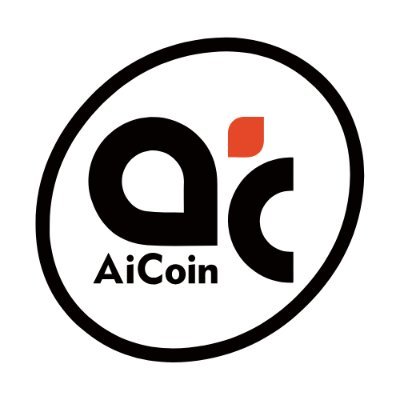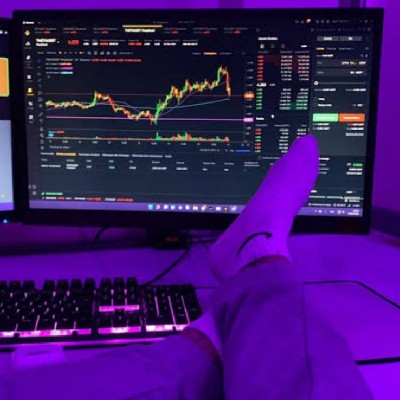
On April 3, 2025, Ray Dalio, founder of Bridgewater Fund, shared his insightful views on the impact of tariffs on X, emphasizing both short-term and long-term effects on the global economy.
Tier 1 Impacts (Direct Effects)
Increase in tax revenue: Tariffs are shared by foreign producers and domestic consumers, with the distribution depending on price elasticity.
Reduction in global production efficiency: Tariffs hinder free trade, reducing resource allocation efficiency.
Global stagflation effects:
For tariffed countries (exporters like China, Japan, South Korea, Vietnam) → Deflationary pressure.
For tariff-imposing countries (importers like the US) → Inflationary pressure.
Protection of domestic businesses: Tariffs reduce foreign competition, helping domestic businesses survive but may decrease their efficiency.
Geopolitical need: During great power conflicts, tariffs help maintain domestic production capabilities.
Reduced economic dependency: Tariffs reduce reliance on foreign goods and capital, especially in times of geopolitical tension.
Tier 2 Impacts (Dependent on Countries' Responses)
Risk of trade wars: If tariffed countries retaliate, global stagflation effects will intensify.
Central bank policy adjustments:
Tariffed countries → Currency devaluation, reduced interest rates (to ease deflationary pressure).
Tariff-imposing countries → Currency appreciation, higher interest rates (to curb inflation).
Fiscal policy adjustments:
Deflationary countries → Increase fiscal stimulus.
Inflationary countries → Tighten fiscal policy.
Long-Term Impacts (Macro Trends)
Global economic imbalances (debt, trade, capital flows) must be corrected, as the current monetary and geopolitical systems are unsustainable.
Adjustments may be sudden and unconventional, like policy interventions or market fluctuations.
Future economic strength depends on:
The reliability of debt markets (USD's status as a reserve currency).
Productivity levels of countries.
Attractiveness of political and investment environments.
The US Dollar Issue
The USD, as a reserve currency, offers advantages (increasing demand for US bonds) but can lead to excessive borrowing and unsustainable debt.
Appreciation of the Chinese RMB might be part of US-China negotiations, impacting global capital flows and monetary policies.
Conclusion
The impact of tariffs is complex, involving both short-term economic effects and long-term global economic structural adjustments. Ray Dalio believes that global debt and economic imbalances must be addressed, and tariffs and monetary policies will play a crucial role in the future power dynamics between nations.
The Dark Side of Tariffs: Dalio Predicts Global Stagflation and Economic Upheaval
Ray Dalio, founder of Bridgewater Associates, has issued a stark warning about the economic impact of U.S. President Donald Trump’s newly unveiled tariff policies. Dalio stated that the tariff regime could lead to a surge in global stagflation and significantly reshape U.S.- China trade relations.
Dalio’s analysis, presented in a recent commentary, breaks down the “first-order” effects of tariffs. He notes that tariffs can generate revenue for the imposing country while reducing global production efficiencies. This perspective aligns with Trump’s Liberation Day speech, where he reiterated claims that revenues from tariffs made the U.S. wealthy before the introduction of income tax in 1913.
The Trump administration, by imposing reciprocal tariffs on both allies and adversaries, is confident that this measure, combined with spending cuts, will quickly transform the country’s deficit into a surplus. However, critics of the Trump administration argue that the tariffs will increase prices for U.S. consumers. Others warn that these have the potential to damage international trade relationships and undermine the global trading system.
The Bridgewater Associates founder meanwhile cautioned that the tariffs are inherently stagflationary, creating a complex interplay of deflationary and inflationary pressures across the globe.
“Tariffs are necessary in times of an international great power conflict to assure domestic capabilities for production,” Dalio acknowledged, highlighting their strategic importance in periods of geopolitical tension.
Still, he also emphasized their potential to exacerbate existing trade imbalances and increase dependencies on foreign capital, which is particularly concerning during escalating international conflicts.
Meanwhile, Dalio’s concerns extend beyond the immediate impact of tariffs, delving into what he called the “second-order” consequences arising from retaliatory measures, currency fluctuations, and central bank responses. He warned that reciprocal tariffs from affected nations could trigger widespread stagflation, while monetary and fiscal policy adjustments could further complicate the economic landscape.
A key point of contention in Dalio’s analysis revolves around the U.S. dollar’s status as the world’s primary reserve currency. While acknowledging the benefits of this privilege, he cautioned against its potential for abuse, citing the nation’s “over-borrowing and debt problems.” Dalio suggested a potential solution in a negotiated appreciation of the Chinese yuan renminbi (RMB), a move he believes could be mutually beneficial for both the U.S. and China.
“It has been said that China’s RMB should be appreciated, which probably could be agreed to between the Americans and Chinese as part of some trade and capital deal, ideally made when Trump and Xi meet,” Dalio stated.
He stressed the urgent need to address existing imbalances, warning of their “dangerously unsustainable” nature. Dalio predicted “abrupt, unconventional changes” to the current monetary, economic, and geopolitical order.
Ultimately, Dalio concluded, the long-term impact of these policy changes will hinge on factors such as trust in debt and capital markets, countries’ productivity levels, and the attractiveness of their political systems for living, working, and investing.
免责声明:本文章仅代表作者个人观点,不代表本平台的立场和观点。本文章仅供信息分享,不构成对任何人的任何投资建议。用户与作者之间的任何争议,与本平台无关。如网页中刊载的文章或图片涉及侵权,请提供相关的权利证明和身份证明发送邮件到support@aicoin.com,本平台相关工作人员将会进行核查。
Crypto Prices Today (03rd April, 2025): Trump Tariffs Sparks Market Selloff?
The crypto market today has taken a notable hit, following the trade tensions from Trump’s tariffs and inflation fears. The brunt was significant as the business saw liquidations of over $500 million. Bringing the traditional stock market into reference, the S&P 500 saw a $2 trillion wipeout in just 15 minutes.
The numbers have taken a toll on investors and traders. As a result, the Fear & Greed Index has dropped to a fearful score of 24. Despite this, the ray of positivity comes from the U.S. passing the STABLE ACT, influencing American Banks to explore stablecoin use.
◾Bitcoin Faces Pressure Amid Mass Liquidations
The Bitcoin price today has dropped by 0.89% to hold support at $83,539.01. $BTC has been struggling to maintain support despite an 86.71% surge in trading volume to $53.42 billion. The positive news we see today, with respect to $BTC , is Grayscale’s launching 2 Bitcoin ETFs on the NYSE.
◾Altcoin Prices Today
Ethereum today wore Bitcoin’s shoes, slipping by 1.59% to $1,831.58. Meanwhile, XRP and Solana registered declines of 0.80% and 3.38%, respectively. Further reflecting broader market concerns over economic instability and aggressive sell-offs.
◾Top Gainers:
🔹Story IP: Up 7.43% to $4.46.
🔹OM: Up 3.61% to $6.36.
🔹KAIA: Up 3.33% to $0.1066.
◾Top Losers:
🔹Trump: Down 7.93% to $9.42.
🔹Cronos: Down 12.54% to $0.09758.
🔹FORM: Down 11.42% to $2.12.


 أقل سعر
أقل سعر أعلى سعر
أعلى سعر 















































